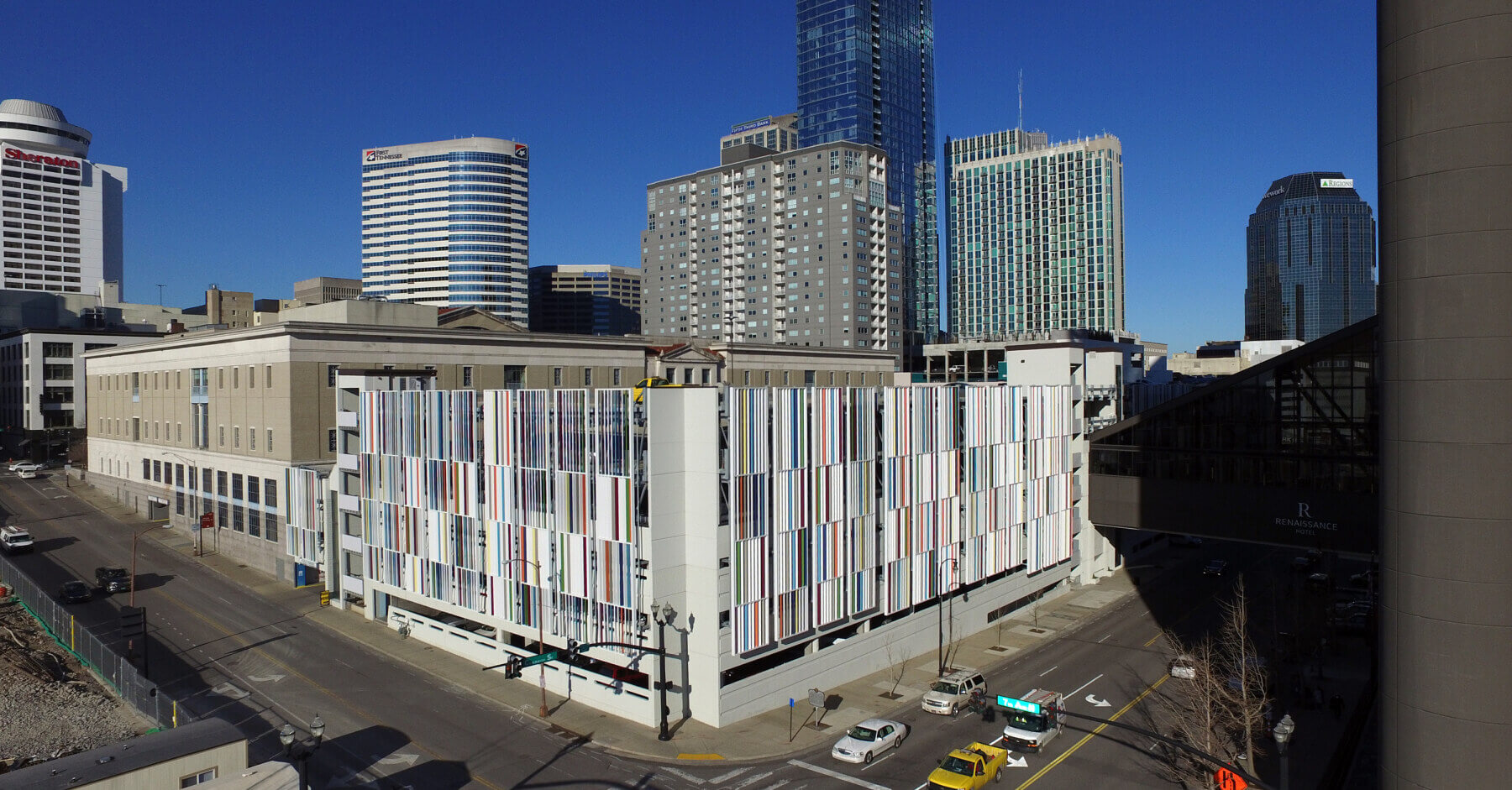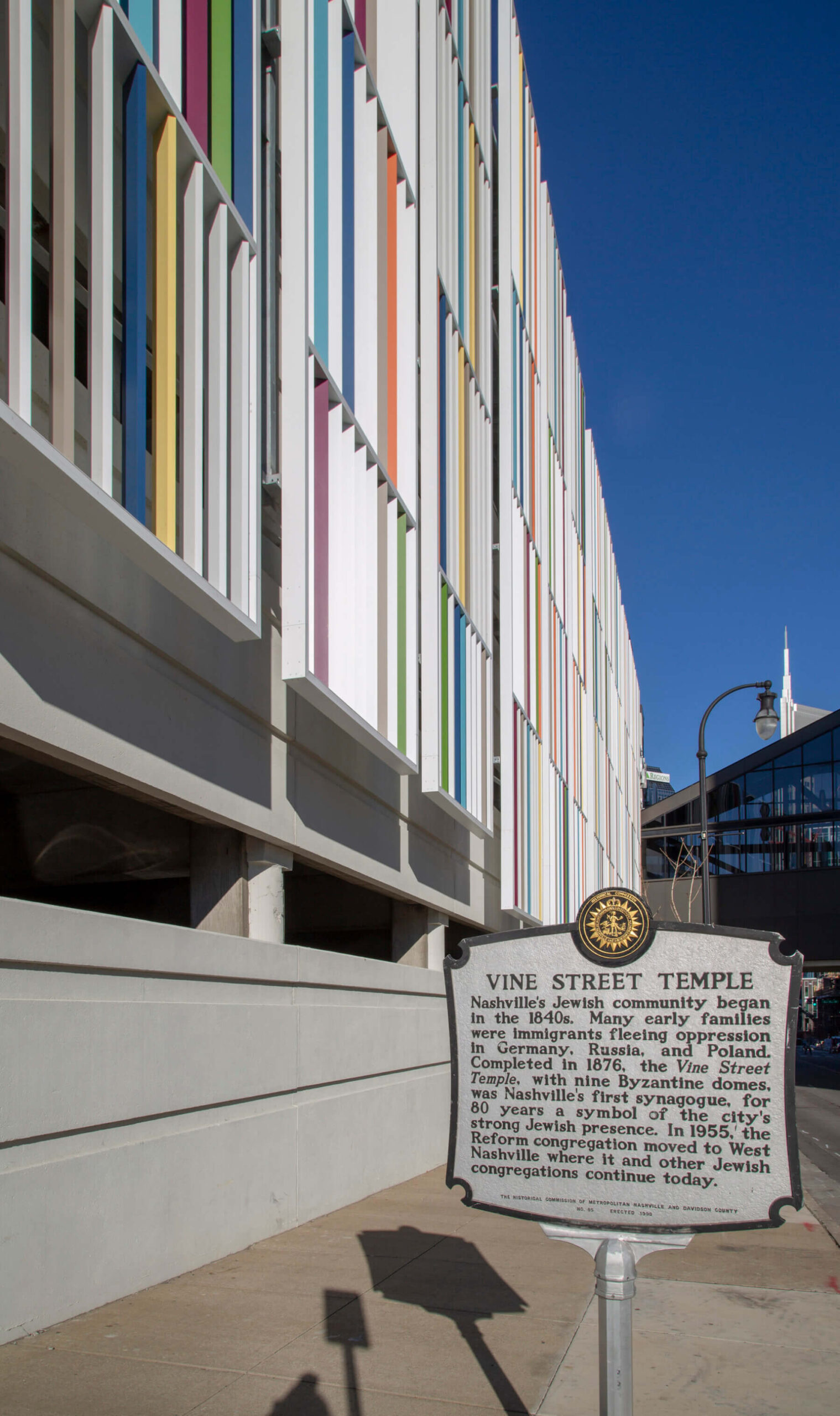
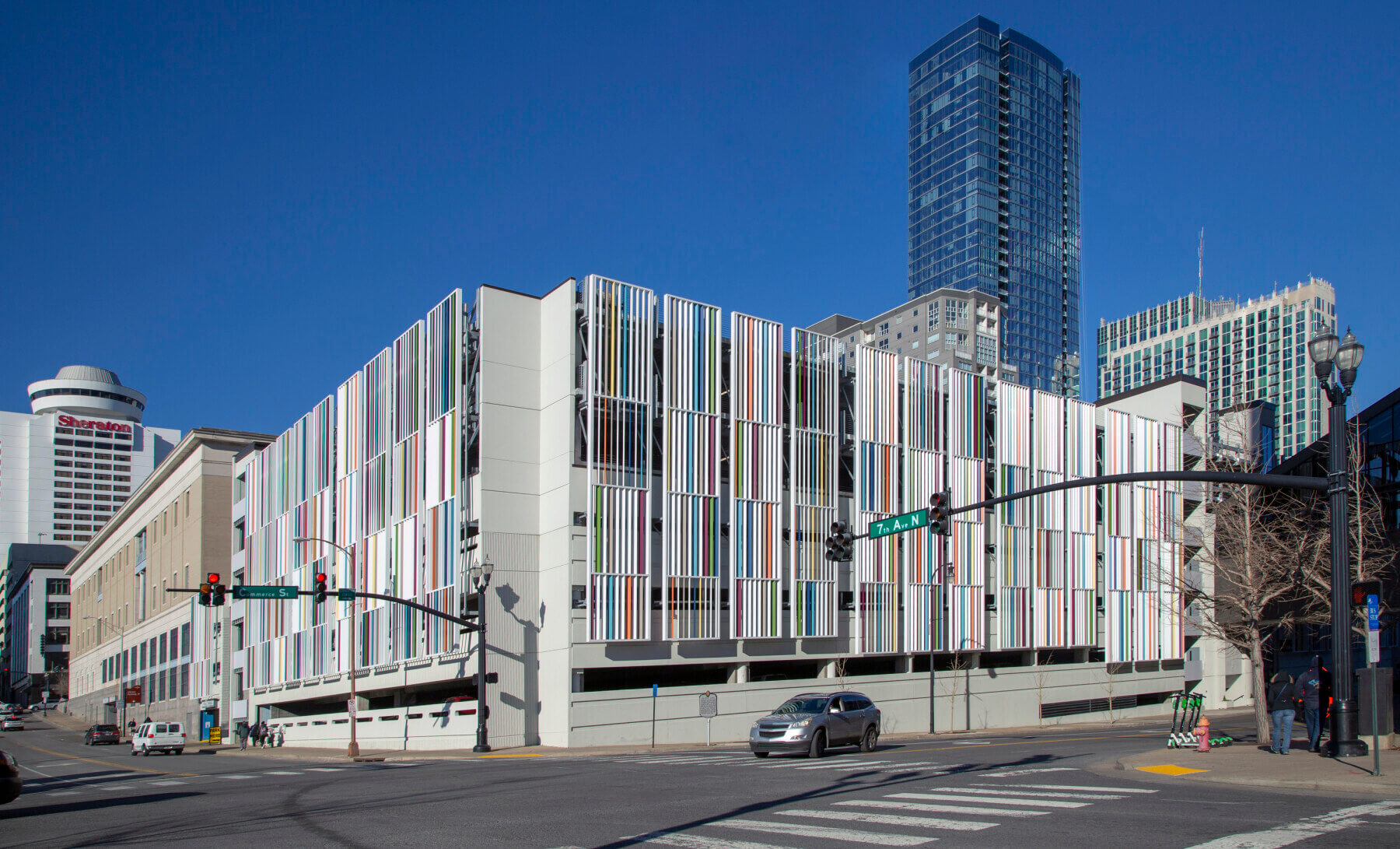
Getting Over Site Hurdles
Thanks to the site’s long history and many uses, we didn’t have much to work with besides basic floor plans. We needed to learn all we could about the site’s structural condition before determining if a vertical expansion was even possible, so we worked with a local geotechnical firm to conduct forensic analysis. After a year of testing the site’s bedrock and the garage’s foundation and concrete, we had the information we needed to move forward with the design.
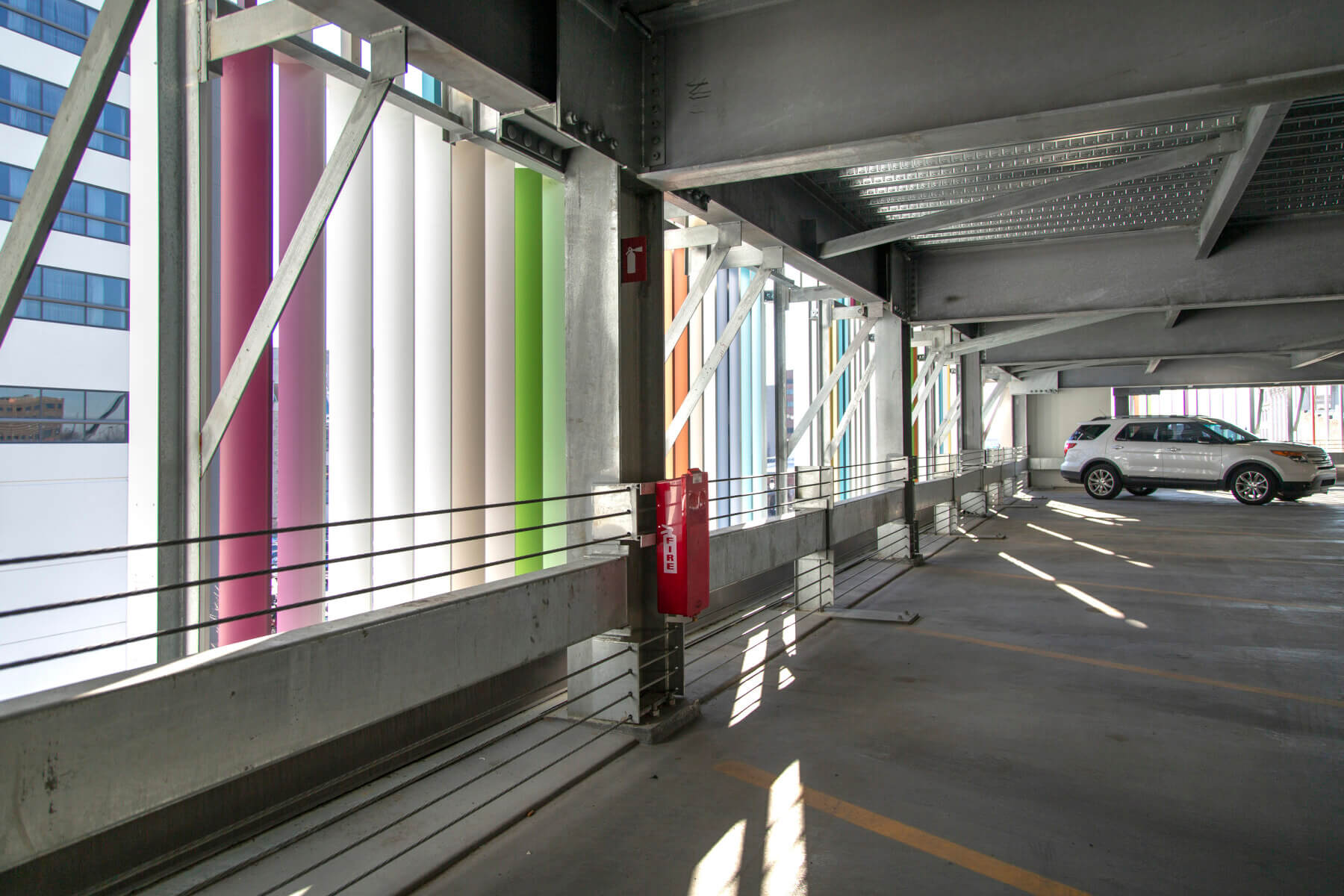
Thinking Outside the Concrete Box
During our investigation we discovered there were at least three different existing structural systems for the garage. Since we were working with a variety of materials, on a tight, active urban site, we elected to use steel, rather than concrete, to frame the garage expansion. As a lighter weight material, steel didn’t require as much support from the foundation, and it also allowed us to work faster without the need for concrete formwork. We also used state-of-the-art steel frame connection technology, rather than traditional welding, to construct the additional levels efficiently.
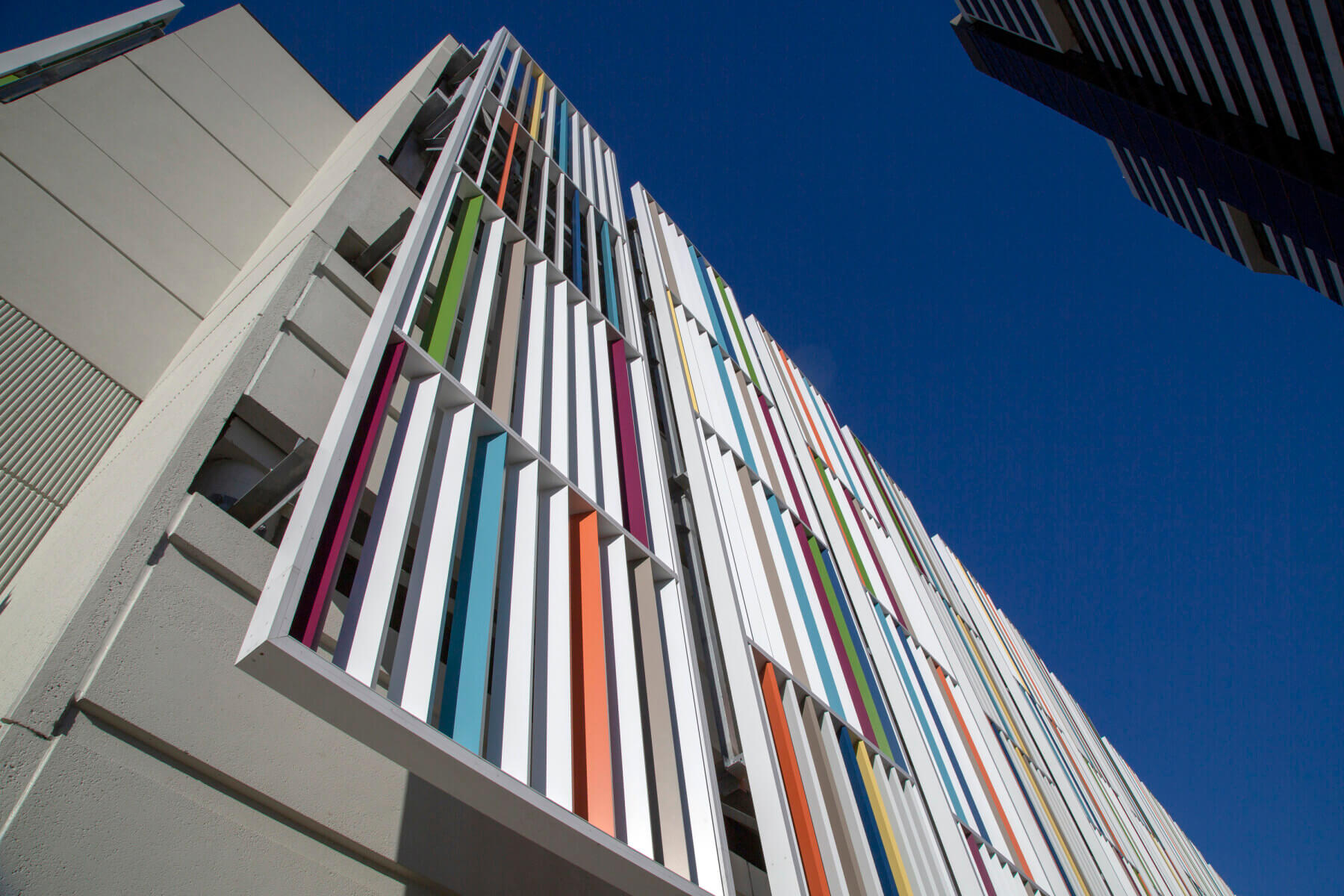
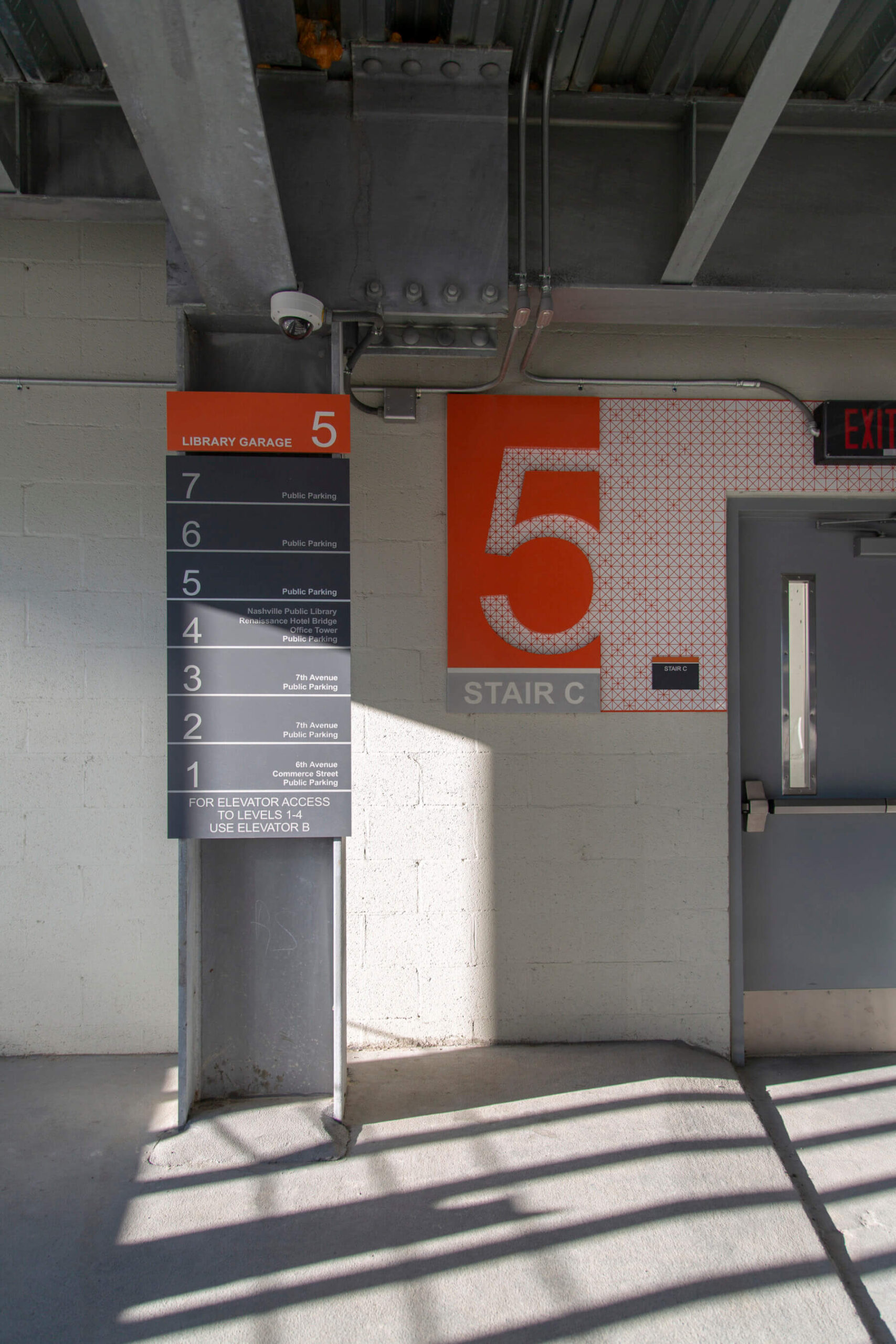
Creating a Pleasant Parking Experience
Gresham Smith also improved the garage’s overall lighting, replaced the existing elevators and stairs, and installed new signage and wayfinding on the upper floors. Additionally, our team of structural engineers worked with the project architect to install large panels with angled fins on the exterior of the garage, blending the new steel structure and the existing concrete garage together seamlessly while encouraging natural ventilation. The brightly colored panels create an identifiable and iconic structure, making it virtually impossible to forget where you parked and restoring the site to the prominence it once enjoyed in its heyday.
